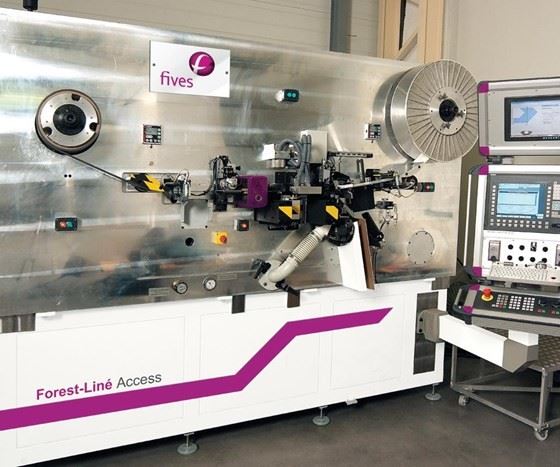Access Atlas still in production
Legacy two-stage ATL technology from the 1980s continues to produce 787 wing skins for Mitsubishi and continues to be adopted by composites industry manufacturers.
CW recently followed up with Fives Group (Paris, France) on its ACCESS (Automated Composite Cassette Edit-Shear System) and ATLAS (Automated Tape Layup System) 2-stage composite tape-laying system (see “Two-stage tape layup: Access cuts/Atlas 2 lays up”). Conceived and constructed in the 1980s by the former Goldsworthy Engineering, the ACCESS ATLAS technology is still in production and continues to find new employment in the industry.
Dassault (Biarritz, France) has purchased an ATLAS for the ramping up of production of the Rafael fighter. This machine is now at the final acceptance phase at the customer’s plant.
Fives has also sold another ATLAS to Sishuan Future Aerospace (Sishaun Province, China) – a private company who is aiming at getting subcontract orders from a Chinese State-owned aerospace manufacturer Comac (Shanghai, China). This is a V2 (dual phase); Sishuan also bought an ACCESS machine as well, which is now installed at the customer site. Commissioning and final acceptance tests are on hold as Sishuan awaits an order from Comac.
Six ACCESS ATLAS machines are still producing 787 wing skins at Mitsubishi Heavy Industries Ltd. (MHI, Tokyo, Japan). MHI also manufactures the 787 wing skins with the Lund SLALOM multi-lane tape layer, from Fives Lund. The Lund SLALOM is the fastest tape layer in the industry with one to 27 lanes depending on part configuration and contour. Each lane achieves up to 3º of off-axis tape lamination allowing wide lamination swaths for highly contoured parts. Its 19 lane 1.5" tape format achieves 28.5" total swath. MHI may divest some of its ATLAS system in the coming years, as the Lund SLALOM ramps up, but for now, MHI still needs this equipment to meet production requirements.
Related Content
-
ATLAM combines composite tape laying, large-scale thermoplastic 3D printing in one printhead
CEAD, GKN Aerospace Deutschland and TU Munich enable additive manufacturing of large composite tools and parts with low CTE and high mechanical properties.
-
Plant tour: Aernnova Composites, Toledo and Illescas, Spain
RTM and ATL/AFP high-rate production sites feature this composites and engineering leader’s continued push for excellence and innovation for future airframes.
-
Combining multifunctional thermoplastic composites, additive manufacturing for next-gen airframe structures
The DOMMINIO project combines AFP with 3D printed gyroid cores, embedded SHM sensors and smart materials for induction-driven disassembly of parts at end of life.












.jpg;maxWidth=300;quality=90)

